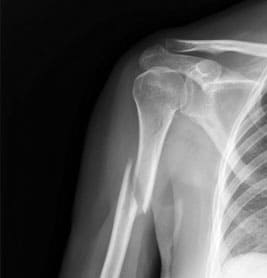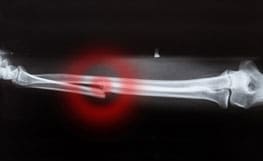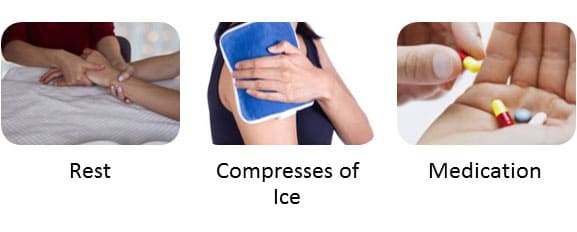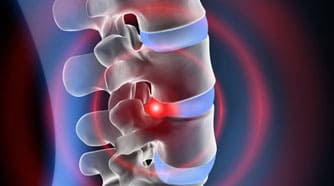13 Causes for Upper Arm Pain: Is it from my shoulder, my neck, or a simple injury?
20
July
2021

Upper arm pain is a sensation of pain that extends from the shoulder to the elbow. A variety of different health issues, as well as bone damage and inflammations can cause upper arm discomfort.
What causes discomfort in the upper arm?
Your upper arm pain may originate from an injury or infection:
-
Sprain or strain
The ripping or overstretching of a ligament or tendon is typically indicative of a sprain. This is a relatively common injury among sportsmen and extremely active people. In most situations, they may be treated at home, but if the sprain is severe, surgery to repair the ligament or tendon is necessary. A strain, on the other hand, is the ripping or overstretching of a muscle.
A single occurrence or the repetition of a movement that places pressure on the muscle might cause a strain.
A sprain or strain might happen on your shoulder or bicep, causing you to feel pain in your whole upper arm. Inability to use the joint, swelling and pain are all signs of a sprain or strain. Treatments include resting, ice compresses and elevating your arm to avoid or reduce swelling.

-
Broken bones
If an intense and severe pain is felt the second following an accident, it is likely that the bone has been cracked or shattered. In either cases, if one believes that their upper arm has been broken or cracked, obtaining quick medical and professional pain relief is the best course of action.
An audible sound may indicate that a bone has been fractured in rare circumstances. Common symptoms include extreme pain, inflammation, bruising, and the inability to move the arm. The most common place to break your bone is your elbow.

-
Joint inflammation
A joint is the point at which two bones in your body connect. Its purpose is to aid in the movement and stabilization of the two separate bones. There is less space for the joint to do its function and move in an inflamed joint because there is more fluid in the tissue than normal. Inflammation of the joints causes discomfort and limits the function of the afflicted joint. It can affect any region of the body, although it is most common in the elbow.
-
Dislocation
When a joint's bone is thrown out of its socket, it's called a dislocation. It can affect any portion of the arm, including the elbows and shoulder, and can be partial or total. It can be cured with surgery, therapy, or simply popping the bone back into its proper socket.

-
Pinched nerve
Too much pressure on a nerve in the arm causes it to be disrupted, resulting in discomfort in the shoulder or arm, as well as numbness or tingling sensations. It usually happens at the elbow. Pinched nerves can occur as a result of injuries or fractures, and you may experience numbness, pain or a burning sensation of the arm, shoulder, or wrist. The following treatments are used to treat a pinched nerve:

Your pain may originate from the shoulder:
-
Shoulder impingement syndrome
Shoulder impingement syndrome develops when you engage in an activity that requires you to continually move or rotate your shoulder. Inflammation or tearing of the joint occurs as a result of the repeated action. Swimmers, construction workers, basketball or tennis players, and anybody who over-trains, are all affected by the soreness, which is also known as rotator cuff tendinitis, overuse, or swimmer's shoulder.
Some symptoms of shoulder impingement syndrome are listed below:
Aches and pains when you lift your arm.
Shoulder dislocation.
Painful sensation when touching the arm or lying on it.
Arm heaviness.
Some of the treatments to ease the pain include application of ice compresses, medication, physical treatment, and rest.
People whose main job is to lift heavy weights all day long have a really high likelihood of experiencing shoulder impingement syndrome.
Below is an analysis done in order to determine if baggage handlers feel decreased pain, increased pain, no change in pain, or no pain at all in their shoulders before and after shifts.

-
Rotator cuff injury
This is a shoulder injury that becomes worse as you get older. It is characterized as a tear or break in the tendons of one's shoulder. Rotator cuff injuries are most prevalent in athletes or those who work in occupations that involve a lot of repetitive overhead motions. They have a big impact on your ability to utilize and rotate your shoulder, and they require physical therapy to recover.

-
Tendinitis
Tendon injuries are unique from other types of injuries. Tendinitis is an infection of the tendons in your elbows or shoulders that can cause pain and discomfort. It can range from mild to severe. This injury causes throbbing discomfort in the injured region, which is readily treated with rest and over-the-counter medications.

-
Frozen shoulder
Frozen shoulder occurs when the tissue that holds the bones in your shoulder together gets stiff and restricts your movements.
The following are some of the signs and symptoms: one shoulder hurts, aches and pains in the upper arm, or restricted shoulder motion.
Those recovering from strokes, mastectomy surgeries, diabetes effects, or heart issues are more likely to get frozen shoulder.
Frozen shoulder is treated with exercises as well as numbing medicines to aid with the pain. Surgery may be required in rare cases to help the shoulder move more freely and smoothly. -
Herniated disc
Depending on where the herniated disc is located in the spine, it may irritate a nearby nerve, resulting in arm or leg discomfort.
If you have a herniated disk in your neck, you will most likely have neck discomfort that radiates to your shoulder, arm, and hand.
Herniated discs are typically self-healing. However, there are several therapies that can help relieve pain such as physical treatments, compresses of ice or heat or medication.

Pain you feel in your whole upper arm may originate from:
-
Myositis
Myositis is an inflammatory disease that causes muscles in the arms and thighs to become inflamed and swollen. It may be difficult for patients to raise their arms. The symptoms increase with time, and patients lose more mobility.
The following are some of the symptoms that people may experience:
Fatigue
Joint discomfort
Arm ache
Difficulty getting out of bed
-
Disuse Atrophy
When a muscle isn't used as often or as often as it should be, it grows weaker and weaker. A broken arm, bed rest, or age might cause you to cease using your arm and, as a result, lose arm strength.
Doctors urge you to exercise and stay active in order to treat your arm. It's the only way to increase your body's muscle and strength. You can begin with simple exercises such as walking.
-
Heart attack
The pain generally extends to the right arm, despite the fact that left arm discomfort is the most prevalent sign of a heart attack. Men and women experience heart attacks differently.
The following are the most prevalent symptoms experienced by patients:
Back aches
Arm discomfort
Fatigue
Shortness of breath
Jaw and neck discomfort
Your pain may originate from the neck:
Myositis is not treatable with any specific medicine. Doctors will recommend medication that is most beneficial to you and your body.
Exercises, stretches, and physical therapy can all help to increase muscle flexibility and strength.

How is arm pain diagnosed?
Right arm pain is usually diagnosed using a physical exam, blood tests, X-rays, MRIs, or electromyography, which stimulates a nerve and analyzes the muscles’ reaction.
Which doctor should I go to?
If you go to your regular doctor or an emergency department, a specialist will assess the probable reasons and origins of your suffering and direct you to the right doctor for an accurate diagnosis and treatment.
If your arm discomfort is caused by a heart condition, you should see a cardiologist or vascular surgeon.
If your arm discomfort is caused by nerve issues, you should consult a neurologist.
If your arm pain isn't urgent, you could be sent to an orthopedic specialist or surgeon, a rheumatologist, or a physical therapist.

When should I get worried?
Home treatments are typically effective in treating right arm discomfort. Right arm discomfort, on the other hand, might indicate a heart attack. As a result, doctors advise seeking medical care anytime you have minor discomfort, notice a deformity in your arm or wrist, have difficulty moving your arm, or experience pain that is accompanied by a sense of pressure in your chest.

Can I get a good night’s sleep with arm pain?
When sleeping on your side, place a pillow on the other side to avoid rolling over in your sleep
Sleeping on your back is the best position for your injury. Your weight is distributed evenly and your neck and shoulders don’t run the risk of being squeezed
Only your head and neck should be placed on the pillow. Avoid placing your shoulders on the pillow.

What can you do to avoid arm pain?
In certain situations, preventing right arm pain may be difficult; nevertheless, the following are some steps you may do to minimize your chances of experiencing arm pain:
Exercising on a regular basis
Practicing sports in a safe manner
Stretching before a workout
Reference list:
(Jessica Caporuscio, Nov 29, 2019) ”Causes of right shoulder and arm pain ” Clinical pharmacist.
Derived from:
https://www.medicalnewstoday.com/articles/327172
(Brunilda Nazario, Jun 14, 2021) “Why Does My Arm Hurt ” Lead Medical Director.
Derived from:
https://www.webmd.com/a-to-z-guides/why-does-my-arm-hurt
If you or anyone you know is suffering from pain, call us today on (469) 562 4188 to book an appointment with our expert doctors.